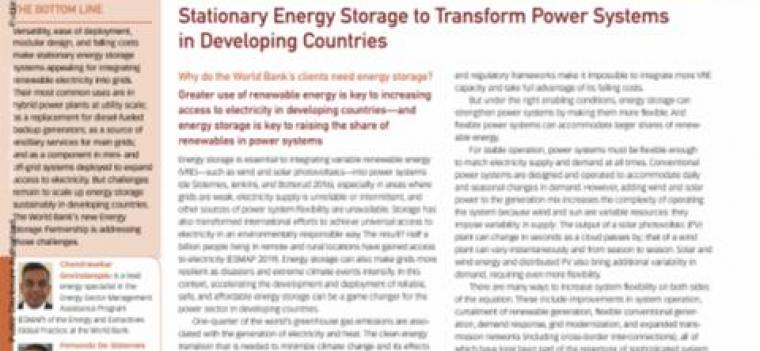Versatility, ease of deployment, modular design, and falling costs make stationary energy storage systems appealing for integrating renewable electricity into grids. Their most common uses are in hybrid power plants at utility scale; as a replacement for diesel-fueled backup generators; as a source of ancillary services for main grids; and as a component in mini- and off-grid systems deployed to expand access to electricity. But challenges remain to scale up energy storage sustainably in developing countries.
The World Bank's new Energy Storage Partnership is addressing those challenges.
DOWNLOAD Live wire
CITATION
Govindarajalu, Chandrasekar; de Sisternes, Fernando; Chavez, Sandra. 2021. Stationary Energy Storage to Transform Power Systems in Developing Countries. Live Wire; 2021/116. World Bank, Washington, DC. © World Bank. https://openknowledge.worldbank.org/handle/10986/35666 License: CC BY 3.0 IGO.
